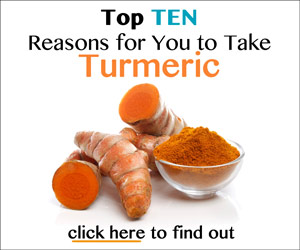Basil's Cancer Fighting Effects

Fun Facts:
In traditional Ayurveda, holy basil is used in aromatherapy as a negative ion-producing natural air purifier to reduce disease-causing stress and toxins. (i.40)
Sweet basil contains a natural antivenom that in animal studies was 70% effective against the deadly jararaca snake venom. (i.41)
An herb that belongs to the mint family, basil was called the "herb of kings" by ancient Greeks. Holy basil (Ocimum sanctum) has been used for medicinal purposes around the world for centuries, including in Ayurveda, Siddha, Greek, Roman, and Unani traditional medicines. Today it is one of the most popular garden herbs, in part due to the flavor it lends to foods and its usefulness as an attractive garden accent. (i.1, 11, 19)
Home Remedies
There are a number of home remedies that include basil. Prepared in a tea, it can be used to treat mouth sores or sore gums. In another home recipe, basil juice can be used to treat an ear ache, or massaged into the scalp to treat dandruff or hair loss. Mixed with honey, it can soothe a hoarse voice. Basil can even be used as a bug repellent. (i.1)
Scientific Evidence of Basil's Benefits
The science behind these traditional home remedies tends to back up their claims of effectiveness. Basil contains numerous phenolic compounds, such as rosmarinic and caffeic acids and rutin, which have strong antioxidant benefits. It also contains phytochemicals and flavonoids, along with volatile oils that have antibacterial properties. Both lab and animal studies show that various species of basil have significant immune-boosting effects, stimulating production of antibodies and cancer-fighting white blood cells: (i.1, 19, 20)
| TYPE OF BASIL | CANCER | TYPE OF STUDY |
|---|---|---|
|
Holy basil |
|
|
|
African basil |
|
|
|
Sweet basil |
|
Animal and human trials demonstrate basil's ability to buffer the adverse side effects of conventional cancer treatments — including providing relief from chemo-induced pain. (i.29-31)
In addition, studies suggest basil can help protect against DNA damage from carcinogens such as:
- Chlorpyrifos — a toxic insecticide. (i.32)
- Ultraviolet radiation — UVA, UVB, and UVC from sunlight. (i.33)
- 4-nitroquinoline-N-oxide — used to induce tumors in labs and a possible groundwater contaminant. (i.33, 34, 271)
- 2-nitropropane — carcinogen present in tobacco smoke and generated in certain industries. (i.33, 35)
- Aflatoxin B1 — a toxin produced by two different strains of Aspergillus molds found growing in drying grains such as corn; known as the most carcinogenic organic toxin to humans. (i.33, 36)
- Benzo(a)pyrene — a contaminating byproduct of carbon-based (e.g., petroleum, coal, and wood) fuel burning found in things such as in vehicle exhaust, asphalt, charred foods, cigarette smoke; on the U.S. Environmental Protection Agency's priority pollutant list. (i.33, 37)
Basil also has powerful antiviral properties which could help prevent certain types of cancer. For example, lab studies indicate that basil extracts show greater antiviral effects than commercial drugs against the hepatitis B virus, a known risk factor for liver cancer. (i.36)
Isn't Basil Oil a Carcinogen?
You may have heard or read some warnings against consuming large amounts of basil oil because it contains estragole, a substance which may cause liver cancer and DNA damage. However, most evidence suggests that basil's benefits are far more significant than any potential negative effect from estragole — including lab studies which show it protects against DNA damage caused by an enzyme-activated carcinogenic metabolite of estragole. (i.33, 38)
New research has discovered that another constituent of basil blocks the enzyme from activating estragole's metabolite — reducing carcinogenic tumor formation in lab rats almost 100% by itself. This suggests that ingesting estragole as part of food containing these inhibitors (such as basil) adds a protective layer on top of natural digestive factors that detoxify estragole — significantly reducing any carcinogenic effect shown with pure estragole. (i.39)
How to Use, Store, & Grow Basil
Besides being relatively easy to grow, basil is easy to use in meal preparation. It is commonly used in pesto, an Italian sauce often comprised of nuts and olive oil. It may be included in a salad, chopped into small strips known as chiffonade. It can be eaten raw or cooked, though if cooking it is best to add it to your dish only for the last few minutes of cooking. (i.1, 12)
Choosing and Storing Basil
Basil will keep just a few days in the refrigerator, but can be frozen by layering between wax paper. Dried basil should be kept in a cool, dry place, and should last up to six months with proper care and handling. When purchasing or picking basil, leaves should be bright green and you should exclude any leaves that are brown or yellow. (i.1)
Growing Basil
Many different types of basil can be grown, each with a distinctive flavor. It can be planted as a border or adjacent to tomatoes to protect against hornworms. Because basil is an annual plant, it must be replanted each spring. (i.11)
If planting basil, seeds should be planted in full-sun. It is not a frost-hearty plant, and it prefers moist soil that is well-drained. At harvest, basil should be rinsed with cool water to remove dirt, and sprigs can be placed in a glass of water to remain fresh for up to a week. (i.1, 11)



